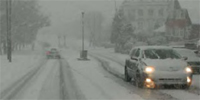|
Just in case you were too busy
thinking about Christmas and the New Year holidays still ahead
of you at the time, a reminder of the biggest story to hit the
taxi business for many years that broke just before those
holidays.
The Mayor’s Air Quality Strategy was published in March
2010, with a consultation period where for the first time the
trade replied as one. It was probably that response that saved
the trade from the calamity of a 10-year maximum lifespan for
its taxis. On December 14, the Mayor’s final document was
published and if you took little notice when reading a report in
the January Call Sign (It’s January and Euro V
time), then here is a rundown of the main points…
From 1 January 2012, no taxi over 15 years old will be licensed.
Then from April next year, all new taxis must meet the Euro 5
standard, although in theory the manufacturers COULD go straight
to Euro 6 (scheduled for September 2014), but that seems
unlikely – although imagine the advantage either manufacturer
would get in terms of sales if they achieved that?
From April 2013, the era of the taxi overhaul will fade into memory
and be replaced by two MOTs per year, but with what has been
mysteriously referred to as "a basic annual taxi-related
inspection undertaken by TfL." This check could possibly be
carried out at the taxi owner’s home.
The Mayor said he would be working with taxi manufacturers to
develop "an affordable taxi with 60% better fuel economy than at
present" by 2015, whilst heading towards zero emissions by 2020.
Whether the latter also falls under |
MAYOR’S AIR QUALITY STRATEGY
And the mystery of the third
check… |

John Mason: No return to them and us!
the banner of "affordable"
wasn’t mentioned – although for drivers going down the
emissions-free route, a financial incentive scheme is to become
available.
The Mayor also wants the taxi industry to identify and mandate tyre
and brake pads that will help to reduce PM10 emissions and also
to reduce idling and empty running with the introduction of
additional taxi ranks, while suspending ‘stopping and waiting’
restrictions.
Finally for new taxi drivers; by the end of 2011 there will be a
requirement that all new drivers must undertake a mandatory
eco-driving course before becoming licensed. The course would
also be open to existing drivers should they wish to
participate.
But what about this third "basic annual taxi-related inspection
undertaken by TfL?" Call Sign was concerned that
this sounded very much like a trip back to the dark days of
Penton Street when stops were dished out for the most
insignificant reasons that had no bearing on the safe running of
the vehicle. A time when presenting a taxi for its annual
overhaul was |
very much a battle
between "them and us." So we told Director of London Taxi &
Private Hire,
John Mason of our fears and asked whether
it was just a cost-cutting exercise? He told us:
"The last thing I want is to have a them and us type regime
or a throwback to the bad old days of taxis being failed for
minor issues that have no impact on the taxis safety and
performance. I can assure you this will not happen and we have
already made progress in this area through the introduction of
advisory notes and a more flexible approach rather than a
them’s the rules type stance.
"It’s too early to say exactly how the third test will be carried
out, but it will cover key elements that are not covered by the
MOT. This could include meters, signs, advertising etc. I agree
that these are simple, straightforward issues hence the strong
possibility the checks could be undertaken at the driver/owners
premises at his/her convenience.
"In terms of costs, any savings will be passed back to the
driver/owner.
"We have much work to do in working out the finer detail and, like
everything in this trade, whatever we implement we are likely to
face some opposition from one quarter or another, but I firmly
believe this is the right way to go."
If this TfL check is as simple as John Mason describes, then the
new MoT system could well save the trade some of the money it
looks likely to need as we head towards 2020…
|


